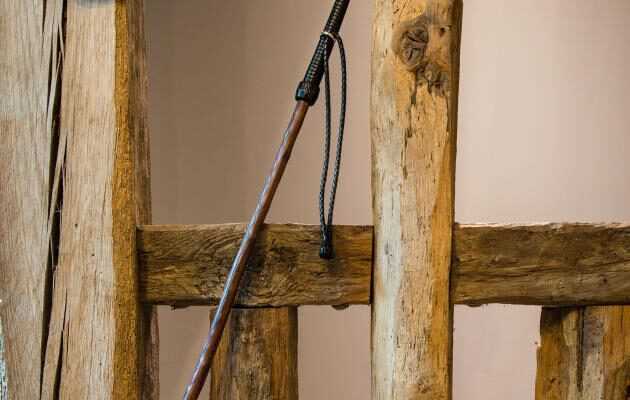FactualThe medlar walking stick is one of the emblematic objects of the Basque Country. In Larressore, the Ainciart Bergara workshops manufacture them using a method that has not changed for centuries.
What unites John Paul II, Sean Penn, Ronald Reagan, Nelson Mandela, Bixente Lizarazu and François Mitterrand? They all had their makila. This favorite object from the Basque Country (which can be written with or without “h”), this personalized walking stick is a gift, a collector’s item, a legion of honor. With the Bergara, it’s even more than that: a duty, almost a mission.
For seven generations, the most famous makilas have been made in their Larressore workshop, with a red facade and a green sign, in the heart of the Pyrénées-Atlantiques. And nothing has changed: “Why change? If we have been working like this for centuries, it is because it is the best way to do it ”, exclaims with conviction Liza Bergara, 33, now at the head of the company. Yet she almost did not attempt the adventure.
For a few years, after a business school in Reims, in the Marne, she chose to work in communication at the European headquarters of Bic, then in a business development start-up. But none of this, standardization and globalization helping, really satisfies her. And, little by little, the family business brought her back to her. “I had a treasure in my hands and I didn’t know it. “
Here is her mother, Nicole, a bank survivor who also returned to the Bergara workshops in 1999: 70 years old, lively, amused… In the attic where the medlar stems are stored, she fondly caresses the woods. “Look at the color of it. ” Amber brown, it is dyed according to a process kept as secret as the formula of Coca-Cola. No textbooks or writings: all knowledge is transmitted by word and example.
No other wood than medlar can provide the raw material. For years the shoots are planted in forests exclusively reserved for this. As soon as the tree reaches its adult size, in the spring, it is marked with a knife with light scarifications, which will no longer be erased. It will pass in the oven at the beginning of winter, will be peeled and cleaned then put to dry for ten years, twenty years sometimes. A know-how registered in the intangible cultural heritage of France.
A year and a half of waiting
Each makila is adapted to the size of the wearer. The first step is to calculate this size, a ceremony as solemn as trying on a new dress at the Windsors. Then other elements are added to the stick: a brass ferrule, a handle covered with braided leather straps, a leather strap, a metal pommel shaped with a hammer and a steel tip, screwed inside this handle.
You have 39.46% of this article left to read. The rest is for subscribers only.
